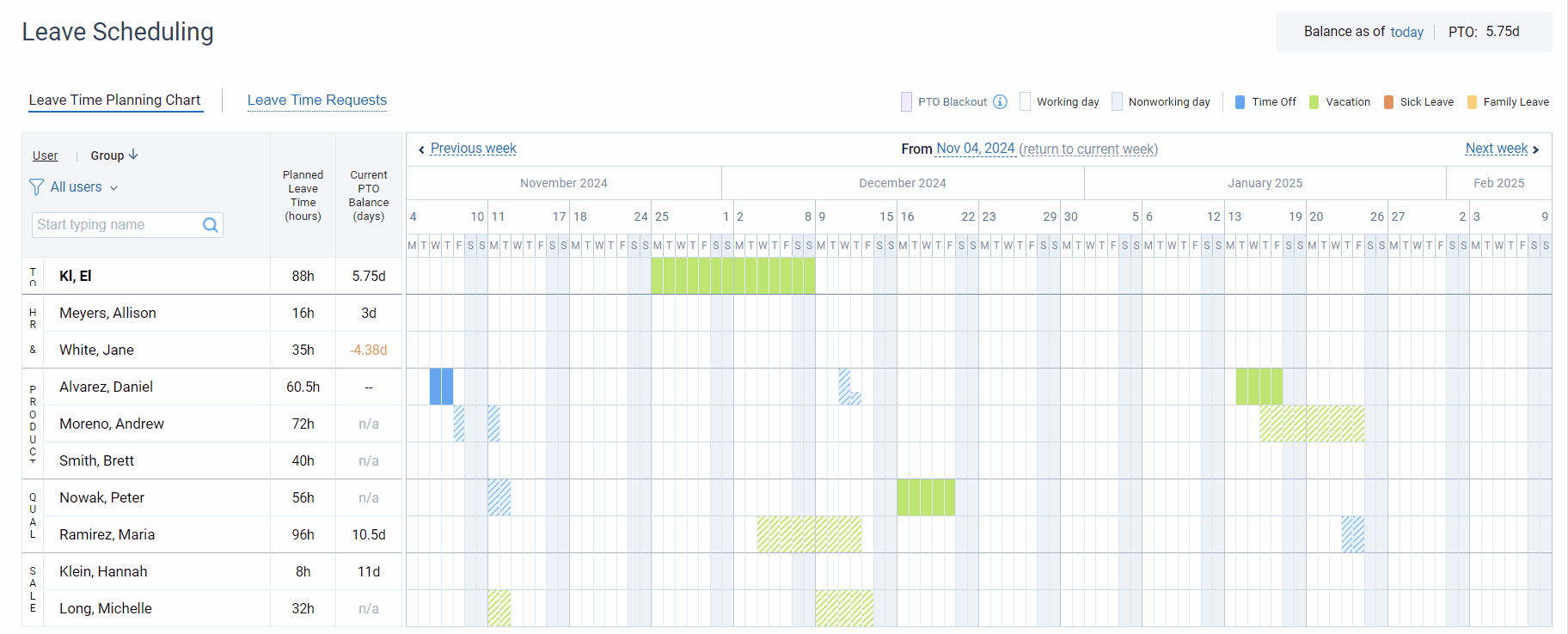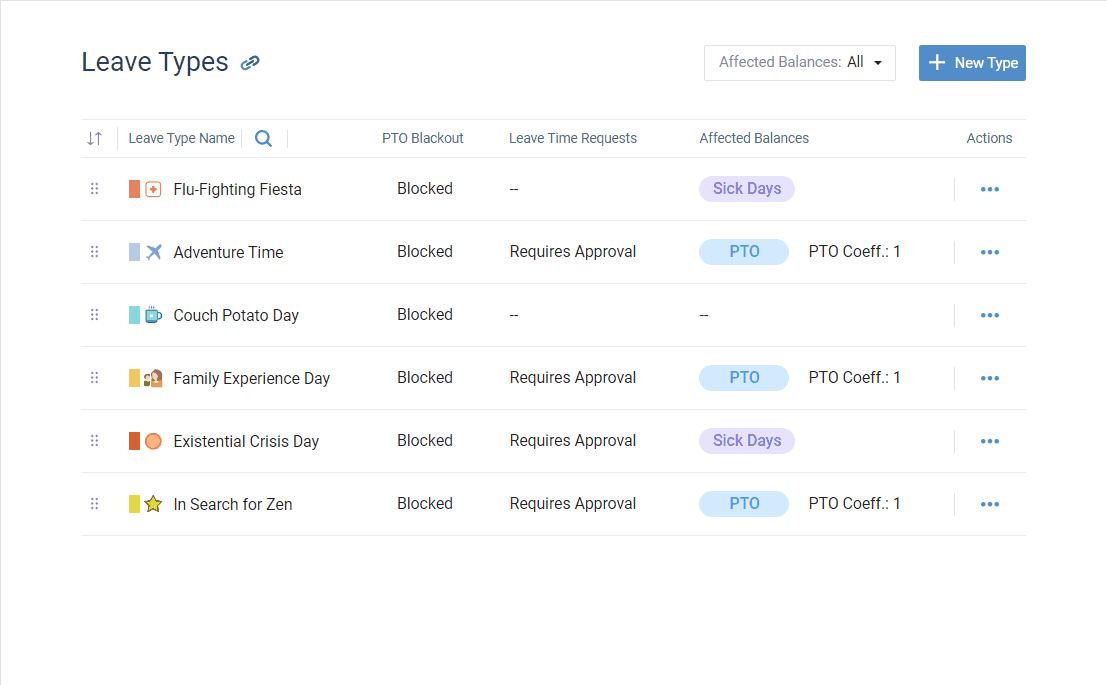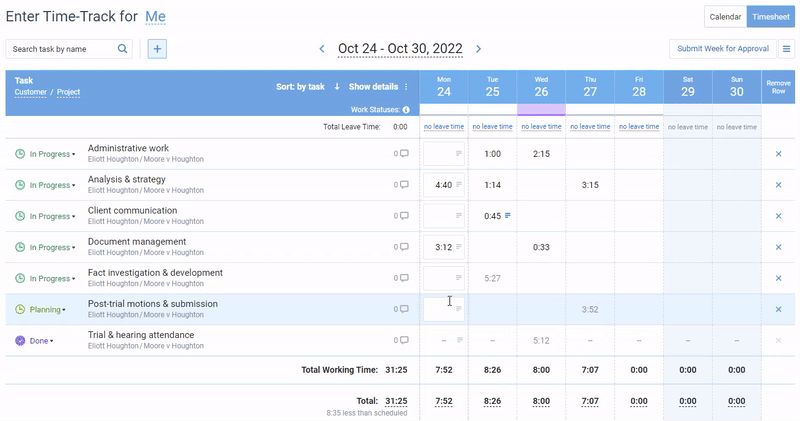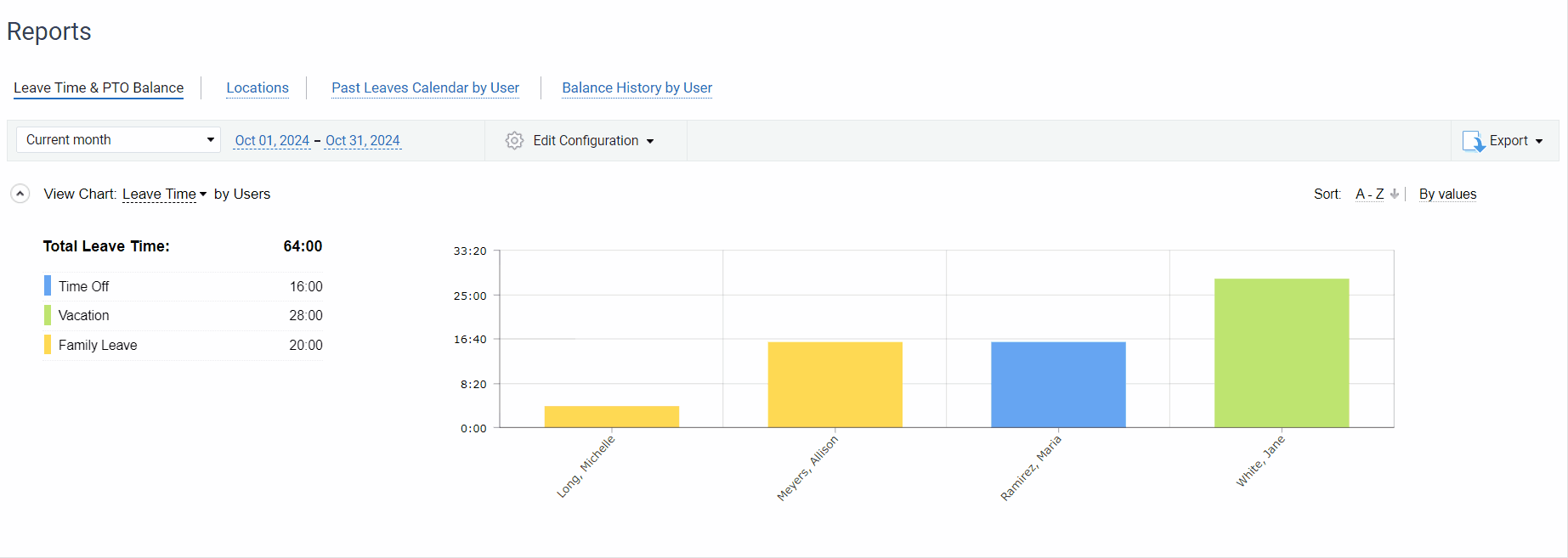When figuring out how much PTO to grant to employees, a company often needs to consider a complex tapestry of legal regulations, industry standards, and general perceptions of what’s considered acceptable. This is required not just to ensure compliance and fair practice but also to stay competitive in the labor market, attract top talent, and retain it with ease.
So, how much PTO is normal?
Let’s explore the 2025 rules from different countries and figure out which factors define the size of PTO entitlements there so you can understand what’s going on and find the best way to approach the task in your own business.
How Much PTO Is Normal? Rules From 8 Countries
North America
United States
Unlike countries where PTO is regulated by governments, the United States leaves it up to employers. Thus, the amount of PTO varies significantly from one company and industry to another. Even the length of the employment period can define the amount of PTO a worker gets:
- On average, American workers in the private sector get 15 PTO days after 5 years of service. The number rises to 20 days off after 20 years of service (Forbes Advisor).
- On the national level, employees across all sectors receive merely 7.6 days of PTO annually (Forbes Advisor).
- Interestingly, while the number of job postings with unlimited PTO as a benefit has risen by 178% since 2015, employees with such jobs take merely 10 days off per year on average (Forbes Advisor).
In sum, the PTO scene in the United States is as diverse and dynamic as the melting pot the United States prides itself on being.
Canada
In Canada, the approach to PTO varies by province:
- Federally regulated employers must offer at least 2 weeks of vacation time after a year of work in the same organization, 3 weeks after 5 years of employment, and 4 weeks after 10 years (Government of Canada).
- If you live in the serene landscapes of Saskatchewan, you’re in for a treat with at least 3 weeks of vacation after one year of employment.
- In provinces like New Brunswick and Newfoundland and Labrador, your PTO upgrade depends on your years of service. In the former, for example, vacation time inches up from 1-2 days off to 1.25-3 days off per year after 8 consecutive years of employment.
Mexico
Since 2023, employees are entitled to at least 12 days of paid vacation after their first year of work. After 5 years of employment, this number increases by 2 additional vacation days creating a nice little bump for employees’ well-being and travel plans.
Since the 6th year of employment, things get even better – an employee receives 2 more days off each subsequent year until the maximum statutory requirement of 32 PTO days is reached.

Use actiPLANS to accrue employees’ PTO automatically and in line with your regional policies. You can even set up individual PTO accrual rules for every team member or update their PTO balances manually!
Europe
Finland
As the happiest country in the world, Finland takes employees’ work-life balance seriously. Based on the Annual Holidays Act:
- An employee gets 2 days off per month during the first year of employment, and 2.5 days off per month if the employment period exceeds one year.
- Government officials get 3 days off per month after 15 years of service.
France
By law, French employees are entitled to a minimum of 2.5 paid vacation days each month regardless of the type of their employment contract (i.e., part-time employees and temporary workers get just as much PTO as their full-time counterparts).
This PTO entitlement excludes public holidays, which in France, add another 11 days off on average, varying by region. In sum, this gives French employees over 40 days off per year to relax. Clearly, their PTO policy abides by the motto, “Work to live, don’t live to work.”
United Kingdom
In the UK, every full-time worker is entitled to at least 5.6 weeks of PTO per year (including public holidays). Part-time employees’ PTO is prorated, so they still get their fair share of relaxation.
Some companies might even raise the stakes and offer additional PTO days, especially if they want to impress and retain talented folks.

actiPLANS features a visual timeline that makes it easy for employees to request time off for any period of time. As a manager, you can quickly see who’s absent and for how long, which helps to improve workload planning a great deal.
Australia and Oceania
Australia
When it comes to PTO, the land Down Under doesn’t mess around. Under the National Employment Standards:
- The standard offering is 4 weeks of PTO per year for both full-time and part-time employees.
- However, it gets even better for shift workers – they get a bonus week off, which brings their overall PTO entitlement to 5 weeks annually.
New Zealand
In New Zealand, employees are entitled to at least 4 weeks of annual PTO after 12 months of continuous employment. That’s a pretty sweet deal compared to some other countries on our list!
Not only that, but public holidays are a separate entitlement. It gives New Zealanders some extra paid days off to enjoy one of the world’s most stunning landscapes without being glued to their desks.
Takeaway
So, how much PTO is normal in the end?
As you can see, the answer largely depends on the region. Besides, in every country two major factors come into play:
- How long have an employee been employed in the company?
- Do they work in the private or public sector?
For example, senior federal workers tend to get more PTO than new hires in the private sector.
Why?
Since most employers prefer their relationships with staff members to run on for years, they will obviously recognize and reward loyalty and longstanding service. In a nutshell, it’s like paying employees a higher level of respect since they’ve proved their trustworthiness and commitment as the time goes on.
Such employee qualities and attitudes are particularly important in the public/federal sector, which happens to be a well-structured system where rank and recognition are earned with effort and consistency – so, seniority-based PTO bonuses make total sense.
Other Factors to Consider
In the private sector, employers’ unique PTO policies play a huge role – if the management wants, nothing prevents them from offering more paid days off to their staff than it’s statutory required, and the rising number of companies with unlimited PTO policies is a proof to that.
So, let’s see what else you need to think of when measuring how much PTO to give your staff:
What’s your company’s culture?
In highly hierarchical, formal organizations with the nose-to-the-grindstone attitude, the management can expect dedication and long hours from employees. And if the company regards constant work as the only path to success, it obviously will offer small or even hardly existing PTO entitlements (which is risky, to say the least).
Luckily, most companies nowadays adhere to the motto “work hard, play hard.” Thus, they implement generous PTO policies that help to balance intense work periods with sufficient chill-out days so employees don’t simply drown in work and burnout but have a chance to live the best lives possible.
What kind of company do you strive to build?
What industry do you operate in?
Each industry has its norms, expectations, and economic realities that apply to every business decision, including PTO management.
For instance, tech companies often have generous PTO policies because they operate in a fiercely competitive landscape. In their case, offering perks that align with the modern work-life balance ideals is one of the best ways to attract and retain top talent. In short, if a tech startup offers fewer benefits than its competitors in the labor market, it risks to miss the chance to get the best of the best professionals on its team.
But what about other industries?
Those in retail or hospitality might not have as much flexibility to dole out lengthy staff absences like tech businesses simply because they largely rely on a consistent, in-person workforce to meet their day-to-day demands.
Financial considerations also play a role. Some sectors have narrower margins and tighter budgets, which limit their ability to afford extended employee vacations.
So, make sure to take all these industry factors into account when developing your PTO policy.
How much PTO is normal based on your employees’ wants and needs?
Besides legal compliance, some of the primary goals of PTO are to boost team morale and enhance your employees’ work-life balance. Hence, it makes total sense to ask them how much PTO they actually need.
Besides legal compliance, some of the primary goals of PTO are to boost team morale and enhance your employees’ work-life balance. Hence, it makes total sense to ask them how much PTO they actually need.
Don’t be afraid of not meeting your staff members’ expectations – they probably are very reasonable people and won’t ask to be absent from work for half a year (at least, out loud).
Just consider their commitments outside of the workplace, the conditions in which they live, and occasions on which they are most likely to take days off. This information will help you design different leave types, workplace arrangements, and PTO management rules that will perfectly align with what your team members want and actually add value to their lives.
Will your PTO plan combine vacation time and sick leave?
Distinguishing between personal time off and sick leave is a normal practice in many businesses, and, in fact, many countries have disparate laws to regulate these two types of leave.
Nevertheless, combining sick leave and vacation time under the same policy may have a couple of benefits:
- It gives employees the flexibility to use their time off as they see fit without worrying about excuses – be that a long-distance trip or a short couch potato experience. In the end, it can improve their job satisfaction a great deal.
- For employers, a combined PTO plan can substantially simplify administrative burdens of tracking different leave types separately and foster a culture of trust and responsibility within the team.
Of course, such a policy requires careful planning – you must take extra measures to counteract its potential impact on staff workloads. However, it’s worth a try!
Is More PTO Always Better?
When it comes to the amount of PTO, there’s no one-size-fits-all solution. The aim here is to find the “just right” approach that would keep everyone happy and productive.
Now, let’s talk a bit about the advantages and disadvantages of generous PTO policies.
From an employee’s point of view:
- An ample PTO entitlement means more time to relax, interact with the family, and engage in personal activities. It enhances work-life balance and, usually, has a positive effect on job satisfaction and productivity when employees return to work with their energy and motivation restored.
- On the other hand, too much PTO can substantially extend one’s backlog of to-dos, induce greater stress upon return to work, and may even make one feel disconnected from their role.
From an employer’s perspective:
- Generous PTO policies attract top talent and help to reduce the risk of burnout among employees.
- Nevertheless, more PTO also translates into higher pressure on the remaining staff members to cover for absent colleagues and potential disruptions in workflow. Thus, for businesses, especially smaller ones, managing workloads and customer expectations during a peak vacation season can be challenging.
- Not to mention the costs associated with paid absences from work!
Overall, the balance is key.
Enjoy a Smarter Way to Manage PTO
In the end, sufficient time off is a must-have for any organization that values its team members and strives to keep its productivity high. However, to reap the benefits without encountering the pitfalls, it’s vital to balance generous PTO entitlements with efficient planning and teamwork.
Here’s where an intuitive and flexible resource scheduling solution like actiPLANS comes in handy. It offers:
- Fully automated PTO accrual in line with your custom rules and regional regulations.
- Unlimited bespoke leave types and automated leave approval workflows (with handy email notifications about request statuses for employees and employers alike).

- Employee self-service functionality that allows your staff members to check out their PTO balances whenever they need and request time off in just a few clicks.
- A visual timeline you can use either to track employee locations or to schedule shifts, work activities, and whatnot.
- Seamless time tracking integration with actiTIME. It lets you plan out workloads in greater detail, set task deadlines, track team performance, monitor budgets, and analyze productivity in depth.

- PTO blackout functionality that restricts employees’ ability to request and take time off during the busiest business periods.
- Multiple reports you can use to analyze staff absences and inform your decisions regarding PTO policies.

Check out actiPLANS in action to see how easy it can be to manage PTO. Sign up for a free trial today.



